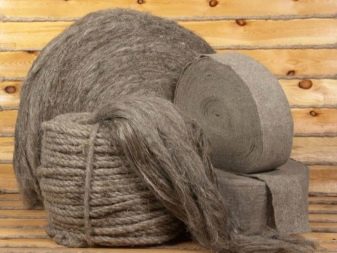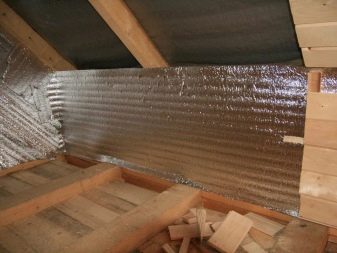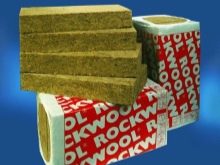How to choose a heater for a bath?
In the process of building a bath, everyone will certainly encounter the question of its insulation. After all, if the insulation is carried out poorly, this can not only prevent the full adoption of bath procedures, but also harm human health. It can warmly go through walls, the ceiling and the floor, so we must take it very seriously to insulate them.
Special features
The main feature of any insulation is its ability to withstand severe temperature fluctuations and high humidity without sacrificing material properties. Therefore, it is important to choose the right insulation for the room. The modern market offers a wide range of insulation, different in their qualities and price range.
First of all, ecological cleanliness and safety of the materials used are important, their ability not to emit harmful substances during strong heating. There are two classes of insulation used in the construction of such premises. One of them includes materials that reflect the infrared radiation spectrum, the other is able to maintain the temperature inside a bath or sauna, having a low thermal conductivity.
Types of materials
The choice of insulation for brick, wood or bath from the blocks is quite wide, it includes both proven materials such as fiberglass, mineral wool, mezhventsovy jute, isover, and new, for example, foil foam. The use of any of them depends on the individual wishes of the customer. For example, when using foiled thermal insulation material, there is no need to additionally make a vapor barrier. However, when choosing it is recommended to consider some points.
First of all, insulation should be labeled with the exact values of thickness and thermal conductivity. The absence of this information suggests that the material may not meet quality standards. Secondly, it is worth choosing a heater with the lowest possible thermal conductivity coefficient, without taking into account its density - this guarantees a smaller heat transfer.
And finally, you should pay attention to the fact that the materials should be as non-flammable, safe and non-toxic, with high resistance to extreme temperature extremes. The recommended class of fire safety of such materials is G0 and G1.
Natural
Warming baths with natural materials has spread its many decades ago. For these purposes, used felt, moss, tow. Currently, this method has also found its application, but more often jute fibers have been used due to the absence of chemical impurities. These materials do not interfere with the air exchange and retain heat well if during work they are properly driven into the joints, leaving no gaps. Inter-pine jute is eco-friendly, it is absolutely safe during operation.
Among the minuses can be noted the love of insects and birds to similar materials, which can create certain inconveniences. In addition, they can not be called moisture resistant. This is also dangerous due to the fact that in the process of decay of heat insulation, adjacent building materials can also be damaged. Work with natural insulation takes quite a long time.They are also fire hazardous, especially when dry.
Materials can be combined, produced in rolls and impregnated with special additives. Such insulation is much more durable than clean.
Styrofoam
Polyfoam can be used for insulation of a wide variety of premises, baths are not an exception. It is very light due to its cellular structure, therefore it is an excellent option when working with frame baths. Also, the foam has excellent sound insulation and wind-proof properties.
The thermal conductivity of polymers is low, while they are easy to process and install, there is no need to seek help from professional builders. In addition, the plates are reasonable price. Much depends on the manufacturer. Inspected firms are fully responsible for the environmental friendliness and safety of their goods, while substandard products can emit harmful substances when heated.
However, with a large number of advantages, there are also disadvantages. First of all, it is the fragility of materials that can be accidentally broken even during installation.They have excellent flammability, despite the processing carried out. Also plates need to be mounted only on a framework, and they are used only for external warming.
When the plates are folded together, joints are formed, which must be further processed so that heat does not escape through them. It is necessary to further organize the vapor barrier, since the foam does not have moisture-absorbing properties, therefore, condensation may appear between it and the wall, which may lead to damage to the structure. And, finally, sometimes mouse minks can appear in such a heater.
Styrofoam
It has a different name - penoplex. Externally, this material resembles foam, however, it has different properties with it. First of all, it has a more dense structure. Extruded polystyrene is relatively resistant to heat and moisture, it is lightweight and can be used with both walls and floors and ceilings. Finally, rodents and insects do not spoil it.
Among the drawbacks can be noted the complexity of the installation, intolerance to ultraviolet radiation and complex hydrocarbons, good flammability, as well as the need for additional vapor barrier. As in the previous case, Penoplex is intended for outdoor use only.
Mineral wool
Allocate stone and slag mineral wool. In the first case, the basis is made of materials like basalt, limestone and the like, in the second - industrial waste, mainly metal. When weatheating baths, it is possible to use only basalt insulation.
The plates are rigid and keep their shape well, this is an undeniable advantage. They do not burn, tolerate temperatures up to 1000 degrees, while not losing their properties. Resistant to mold and mildew, easy to install and operate, and the seams between the plates are tight to each other and almost do not require separate insulation.
As for the minuses, the plates are mounted only on the frame, in addition, they are prone to subsidence. When installing it is necessary to ensure the tightness of the material, otherwise it will lose its qualities.
Currently, mineral wool is used by professional builders less and less, as they prefer to use more modern insulation.
Polyurethane foam
This liquid insulation appeared on the market quite recently.The composition is sprayed and in contact with air turns into foam from the bubbles. After curing, the foam expands greatly. It is very elastic and durable, it is difficult to deform, it has good sound insulation.
The material is environmentally safe and completely non-toxic, it withstands considerable fluctuations in temperature from -90 to +100 degrees. From fireproof, in addition, due to the fact that it creates a protective coating on wooden elements, is able to save them from the effects of insects. The undeniable advantage is the ease of application to any surface.
The main disadvantage is the need to use a spray. This device is not included in the package, so it must be purchased separately.
Expanded clay
The use of expanded clay gravel for insulation has become widespread due to the low price and versatility of the material. It is also used as a filler for lightweight concrete.
The construction of a bath of claydite-concrete blocks is gaining popularity. It is used in all weather conditions. Thermal insulation of the room is carried out with the finish.There is a specificity in carrying out such work. In most cases, mineral wool, foam plastic and thermal fiber are used to insulate such buildings.
Foil options
When laying any kind of insulation it is recommended to use a film for vapor barrier. In foiled it is available initially. It has a reflective function and prevents heat from escaping through cracks and holes.
Foil insulation can be made of mineral material, polystyrene foam, basalt and polyethylene foam. A very thin aluminum foil is applied over the base. It is used for all bath rooms, the main condition - laying shiny side inward.
Criterias of choice
The choice of insulation depends on the requirements of the buyer, which may include both quality and reliability, and the price of the purchased material. In any case, it is recommended to pay attention to individual points so that the result of the work done will not disappoint the consumer.
Be sure to consider the moisture-resistant properties of insulation. In their absence, the material will quickly get wet, which will lead to the processes of decay, and the insulation will have to be completely changed after a couple of years. Also accumulating condensate can play a destructive role.
Individual products can be made from unsafe materials, and they are also capable of releasing toxic substances when heated. Environmentally friendly insulation is very important, since with extreme temperature differences, only high-quality materials will be able to preserve their properties and not harm the users.
We must not forget that the bath is a place of increased fire danger. Therefore, the materials used in construction and insulation should not be flammable and highly inflammable.. In addition, they must be resistant to the spread of harmful microorganisms.
It should be noted that the better the heat-insulating properties of the product, the smaller its volume will be needed in the end, which will certainly contribute to savings. It is also necessary to ensure maximum tightness. And with the ability of the material to keep the shape for a long time, you can abandon the frame equipment.
It must be remembered that the market presents materials of various characteristics and in a large price range. The ideal option would be the choice of high-quality insulation, endowed with the necessary properties, and in a moderate price range.
How to warm?
Dried concrete must be waterproofed and re-filled with cement with the addition of vermiculite. The reinforcing mesh is laid, which is poured on top with concrete, to which fine gravel is added. It is very important to make the slope of the floor where the water flow is located. After that, the pre-installed bollards are laid finishing floor.
Next comes the turn of the walls. Work from the inside are as follows. First of all, using a timber or slats made of wood, it is necessary to fix the crate with a small gap between the slats. In this case, there will be no space for bridges in which cold air can accumulate. As a heater, you can use fiber from basalt or mineral wool.
Properly start the warming of the bath should be with the cap and floor. It can be of two types - flowing and continuous. For each of the species uses its own method of insulation. When working with solid floor, experts recommend to pay attention to the mineral wool. The rough floor is closed to it, and the waterproofing is applied from above. After that you can fill.
As for the flowing floor, the scheme of work is quite different.Initially, you will need to have a pit about 50 centimeters deep. After that, pour 5 centimeters of sand, which must be carefully tamped. Next, the foam is laid with a layer of 20 centimeters and the floor is filled using cement mortar.
Above the insulating material between the slats, you need to apply a vapor barrier, turning it inward with the side of the foil. It must be attached to the rails. This wall insulation ends, it can be used in any of the premises of the bath. If the bath is made of blocks or bricks, insulation is recommended to lay a thicker layer.
Since the hottest air accumulates around the ceiling, experts advise using fire-resistant insulation materials when working with it. The principle of operation is similar to the previous one. If there is an attic in the bath, you should take care of the vapor barrier. Insulation can be laid both between the rafters and above them, and under them too. It should be blocked with waterproofing materials, but you must leave a layer for the air in 20 millimeters.
If there is no attic, the use of expanded clay as a heat-insulating material is advisable.He falls asleep on top of the vapor barrier. The thickness of the layer should be 25 centimeters.
When using insulation panels appear their own nuances. The undoubted advantage is that there is no need for waterproofing, but at the same time, the vapor barrier must be made qualitatively and reliably.
Manufacturers and reviews
The most serious requirements are applied to the production of heat-insulating materials in Europe. Such brands as Knauf, Rockwool, Isover and others are especially popular there. However, the toughest control products are in Germany. This allows us to consider them the highest quality and reliable.
Green Planet products are recognized as one of the safest and greenest on the world market. It is used to perform a wide variety of tasks and is fully certified. According to consumer reviews, the materials of this brand are durable, moisture resistant and do not pose a health hazard during operation.
Tips and recommendations for use
Experts note that floor insulation materials must be completely moisture resistant. In cases with insulation of the ceiling and walls, you can use a reflector or a membrane.
An important point is the maximum density when laying the material, since the presence of cracks will adversely affect humidity, and, moreover, will increase the risk of condensation. It is also recommended to equip the bath with ventilation gaps through which the heater can be dried.
When insulating the ceiling, it is worth refusing from easily deforming products.
In addition, craftsmen are advised to install low doors that have a threshold. This will help keep the heat in the steam room, as well as eliminate possible gaps. We must not forget that when using insulation materials an important role is played by their proper installation. therefore If the consumer is not confident in his own abilities, it is recommended to contact the experts who will carry out the work with high quality and competently.
You will learn how to insulate the bath in the next video.















































































